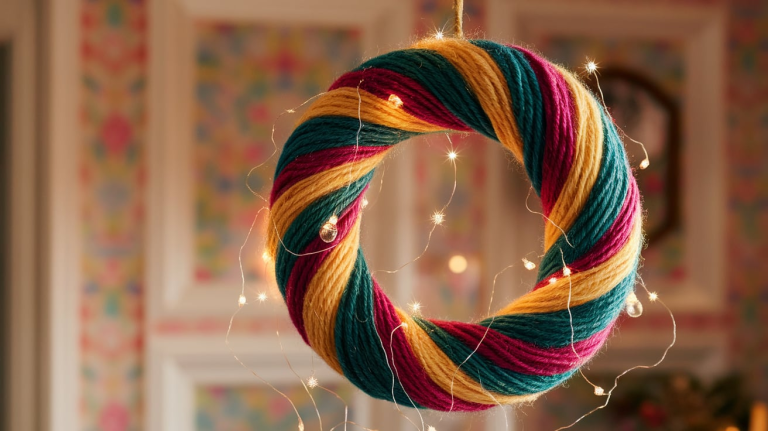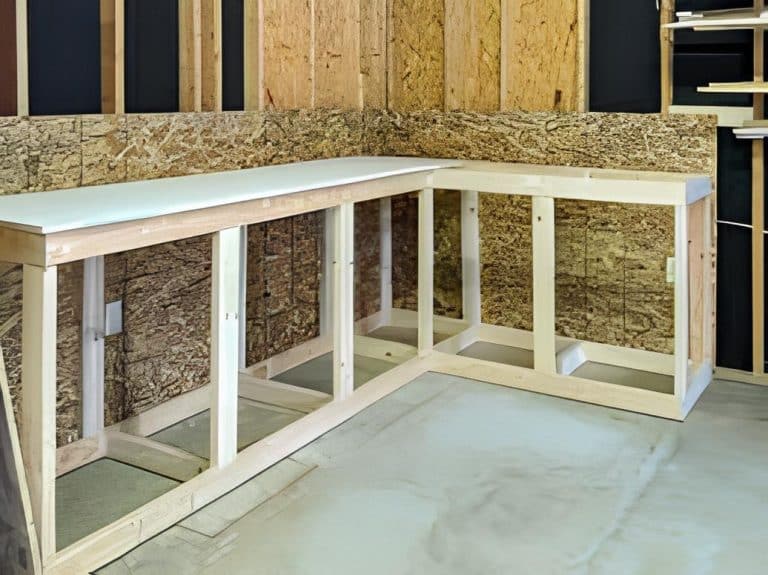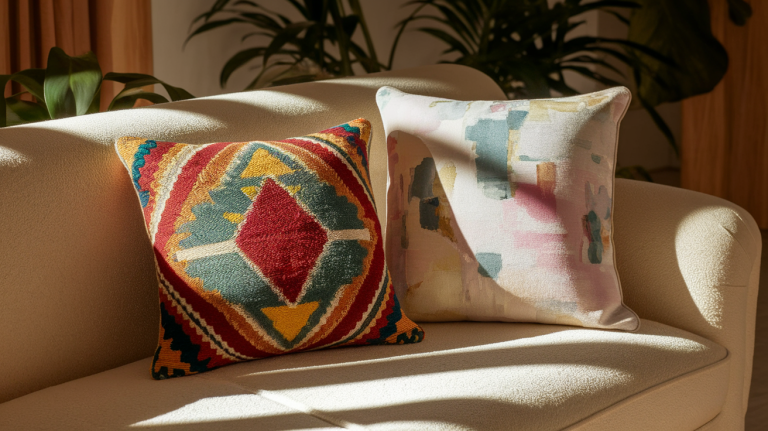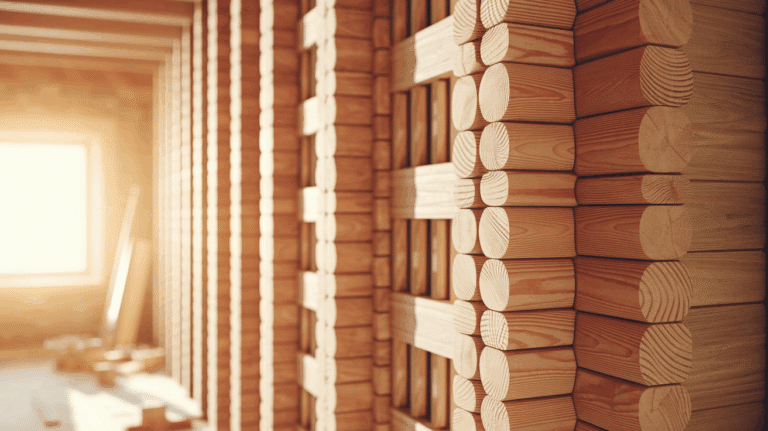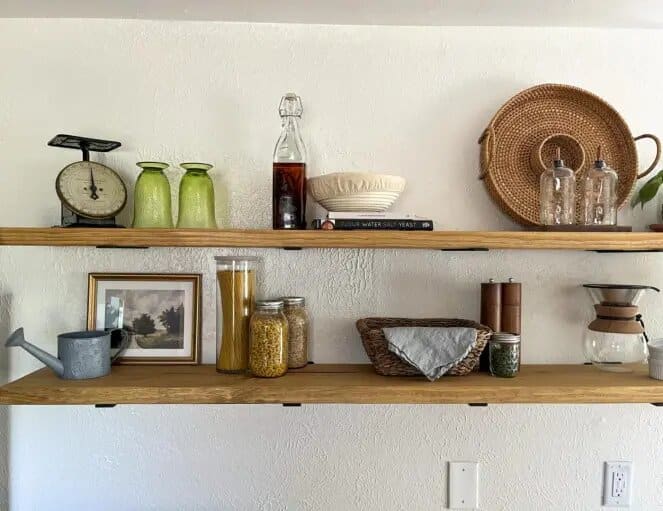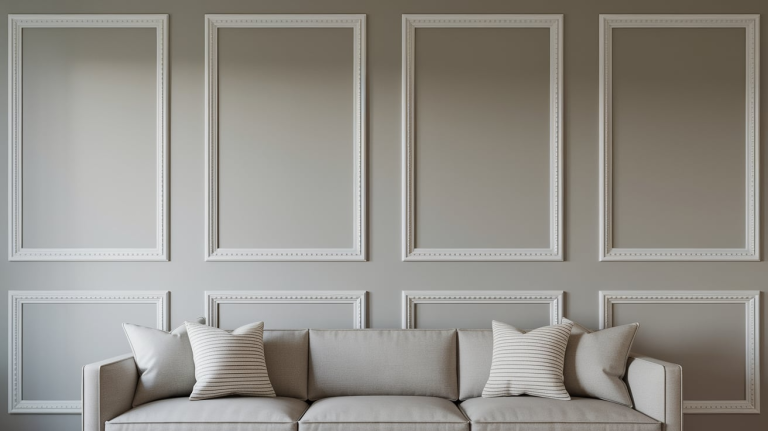How to Layer Rugs for a Designer Look in Your Living Room?
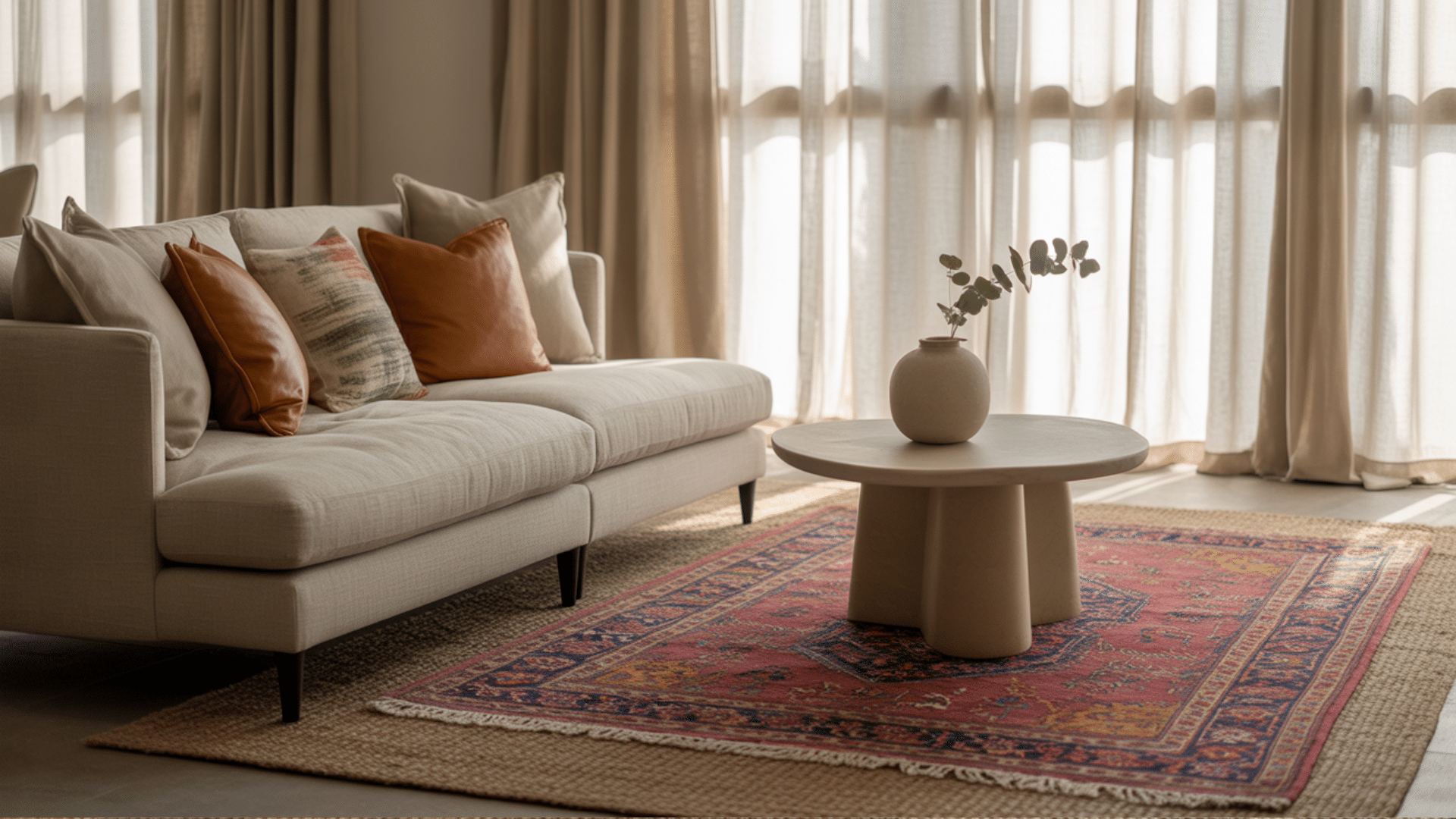
Ever walked into a room and thought, something’s missing? That’s where layered rugs come in.
This clever design trick isn’t just trendy. It’s practical, stylish, and a total game-changer for any space.
Layering rugs can instantly make a room feel warmer, cozier, and more put-together without a significant overhaul.
If you love a bold pop of color, a touch of texture, or want to define an open-plan area, this approach works like magic.
In this guide, we will show you how to layer rugs like a pro, avoid common mistakes, and create a space that feels uniquely yours.
Why Layer Rugs?
Layering rugs is a clever design approach that adds warmth, texture, and visual interest to any room.
It helps define separate zones in open floor plans, making each area feel distinct yet cohesive.
This technique introduces dimension to flat floors, allowing you to incorporate bold patterns without overwhelming the space.
Layered rugs also enhance coziness, making large rooms feel more intimate and welcoming.
No matter your interior style, whether boho, modern, or rustic, combining rugs offers an easy way to uplift a space.
It transforms ordinary rooms into polished, designer-inspired environments that exude character and charm.
Step-by-Step Guide to Layering Rugs
Follow these simple steps to create a look that feels polished, cozy, and full of personality, without the stress or guesswork.
Step 1: Start with a Neutral Base
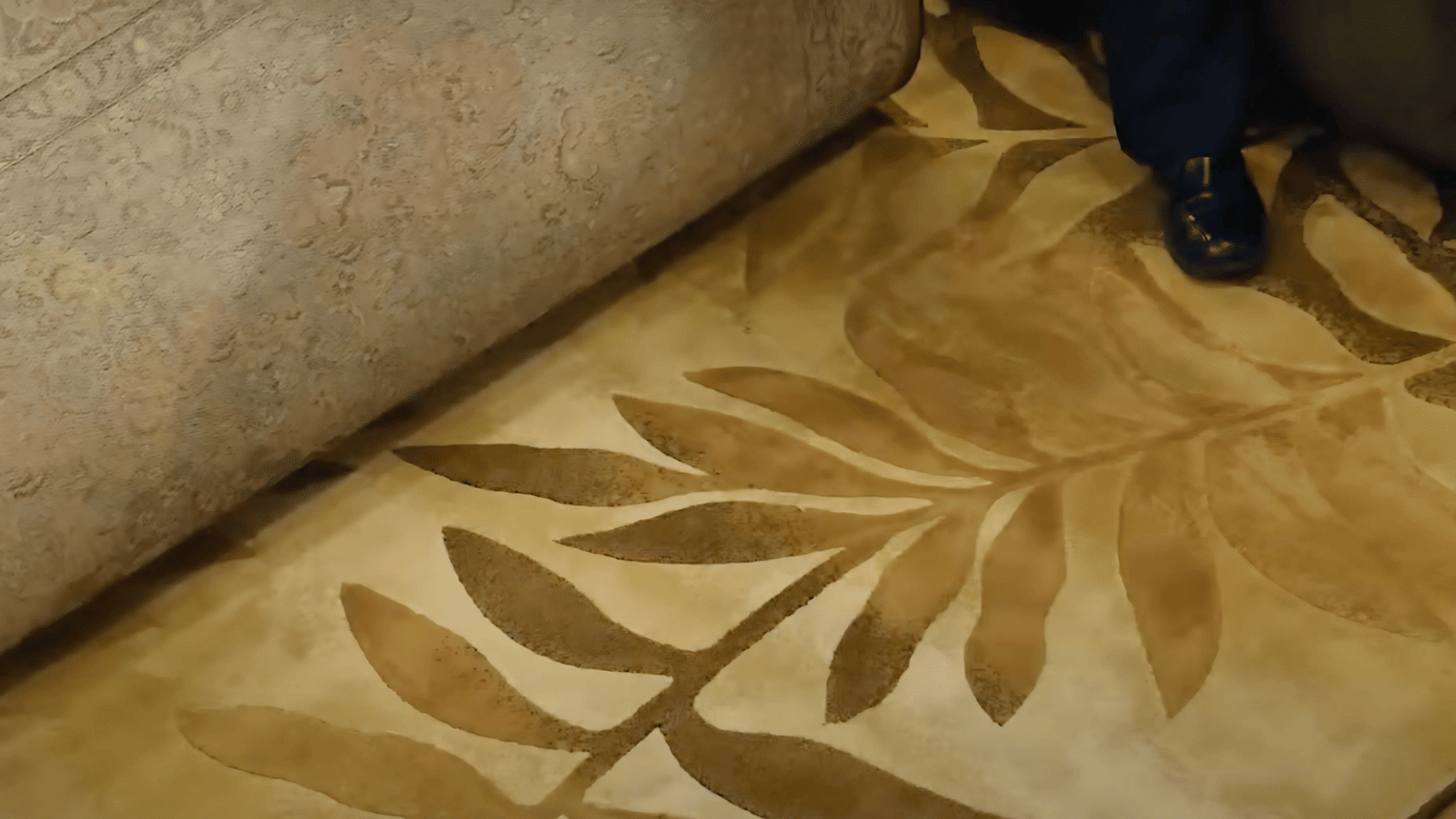
Begin by laying down a large neutral-colored rug as your foundation.
Neutral tones, such as beige, cream, or gray, are most effective because they complement a wide range of patterns and styles.
A simple base helps prevent the overall look from feeling busy and confirms that the top rug becomes the focal point of the layered design.
Step 2: Add Contrast with the Top Rug
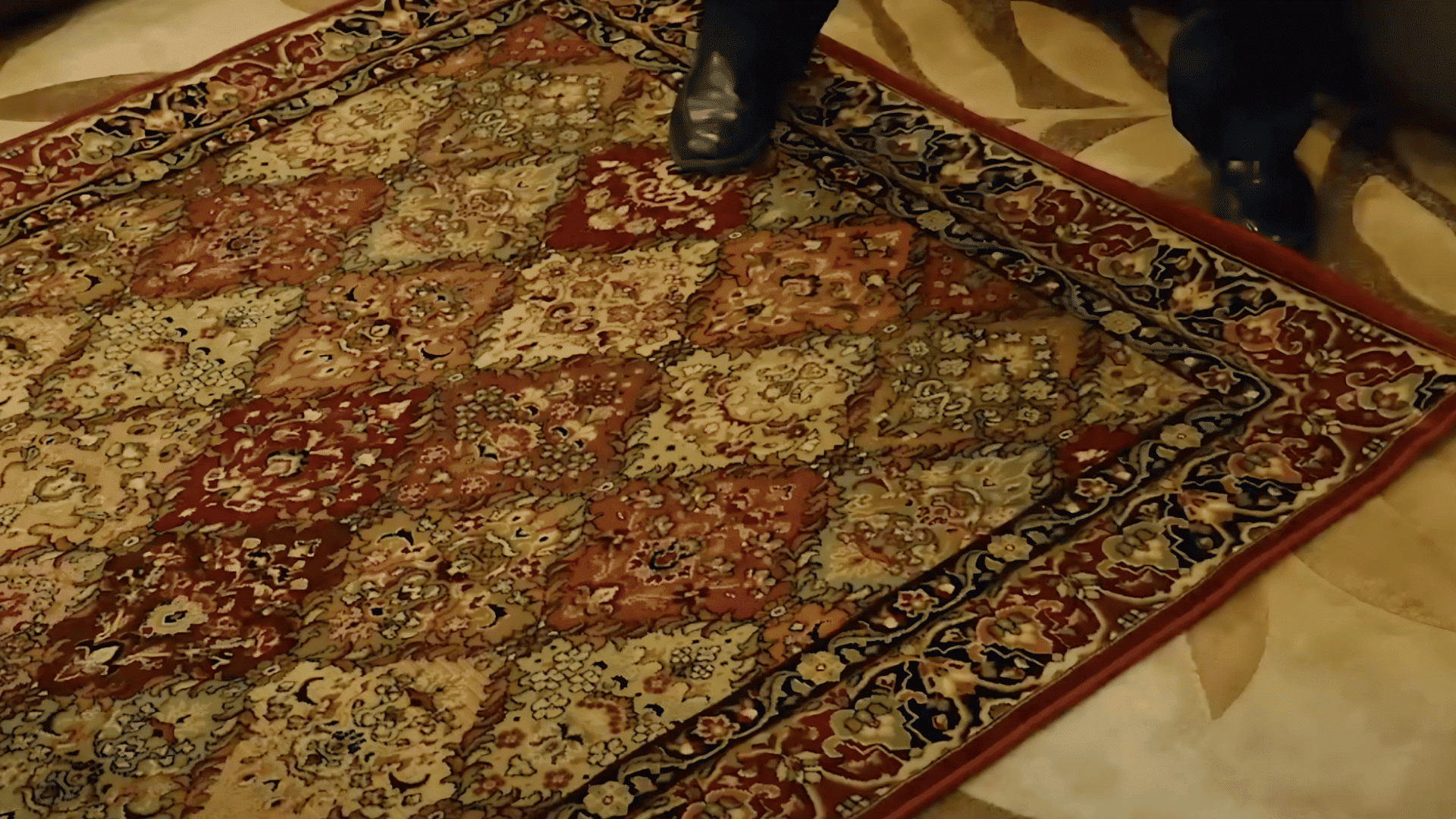
Select a smaller rug to place on top of the base, ensuring it provides visual contrast.
You can achieve this through the use of color, pattern, or material.
For instance, pair a bold geometric rug over a plain base or a soft shag rug over a flat weave for a balanced, stylish look.
Step 3: Coordinate Colors
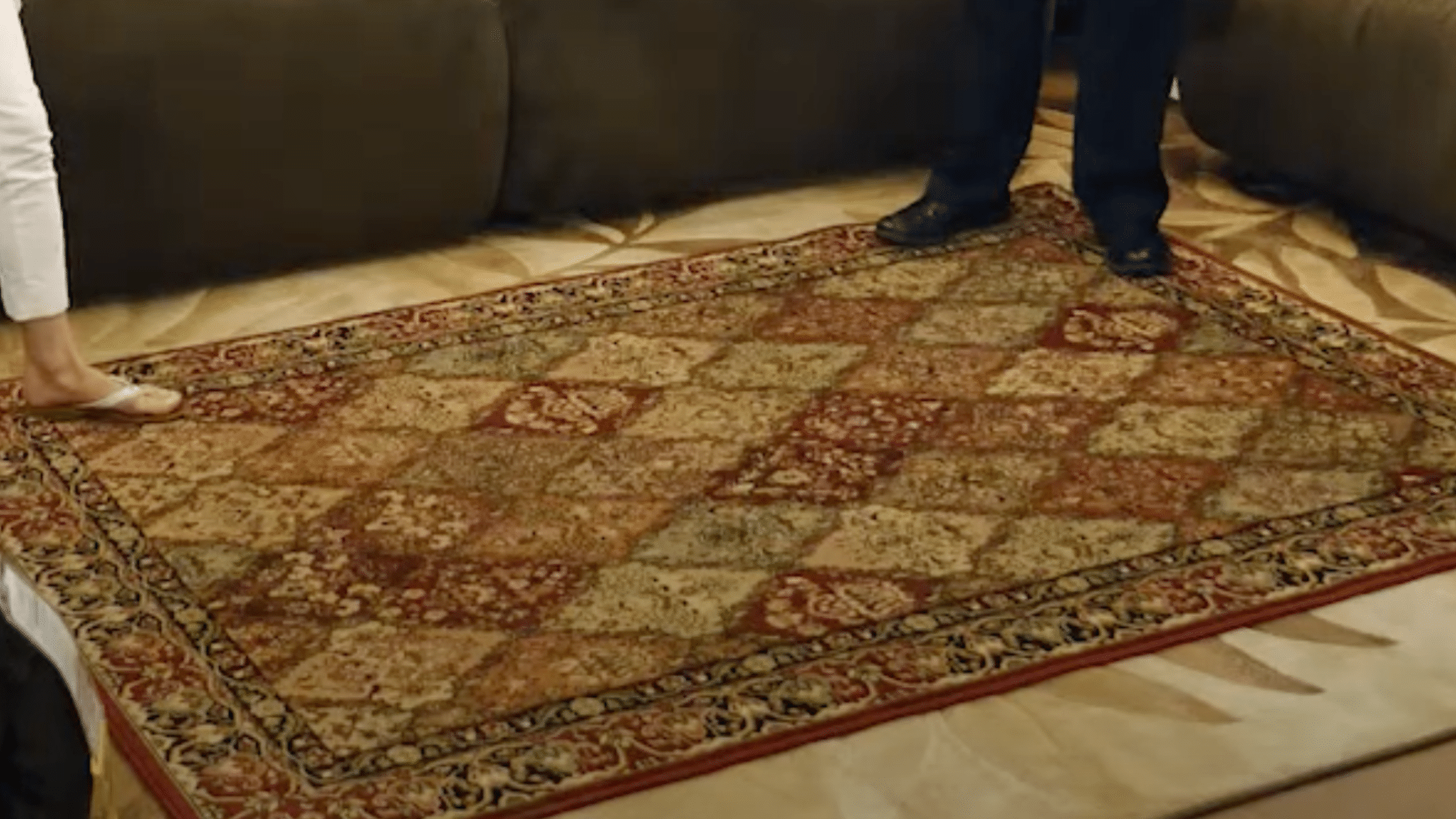
While contrast is a must, coordination is equally important. The colors of both rugs should tie together and align with your room’s overall color scheme.
Look for shared tones or complementary hues between the two rugs.
This approach creates harmony in the space and avoids clashing patterns or colors that can feel overwhelming.
Step 4: Play with Angles and Placement
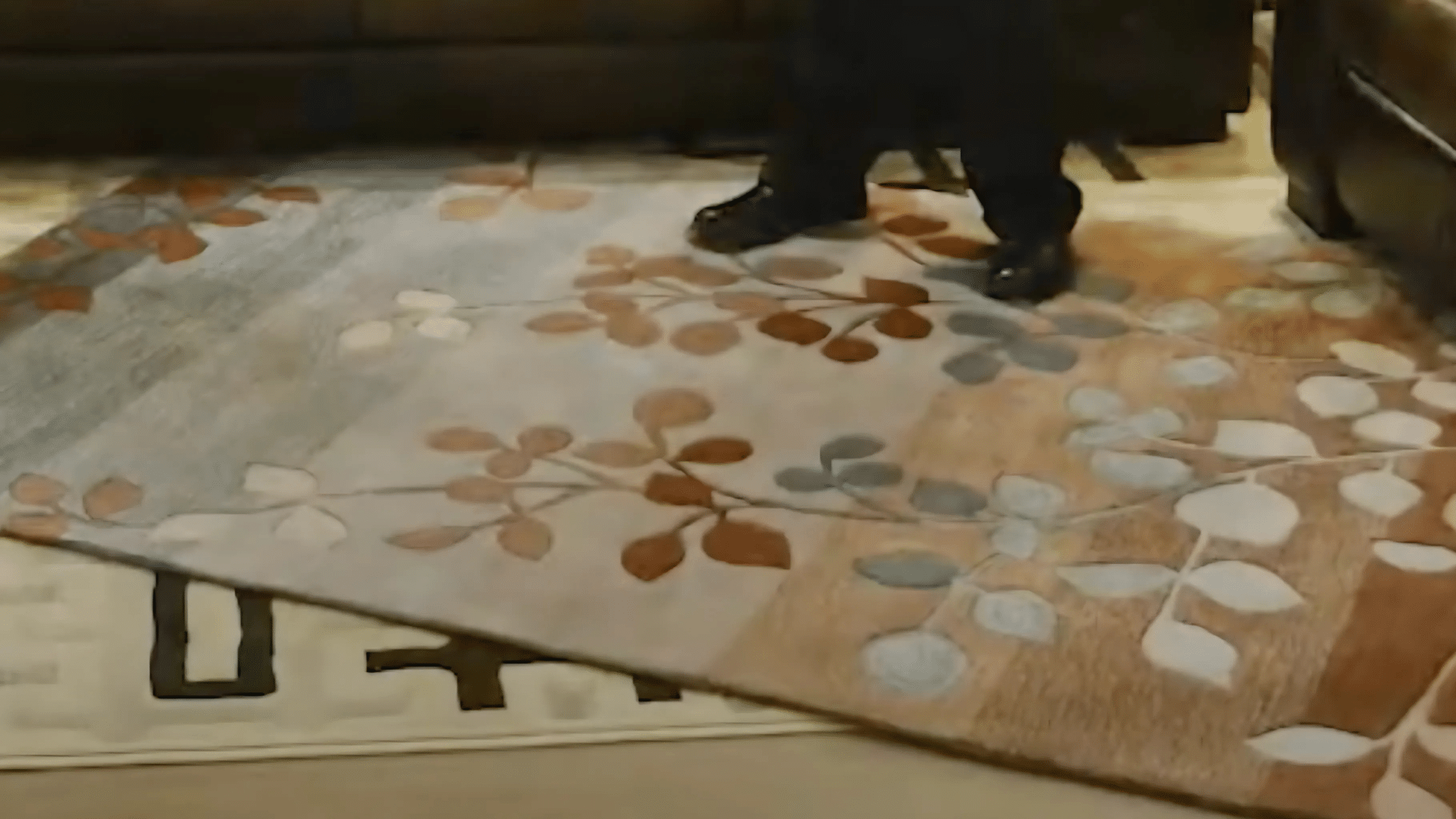
Layering rugs doesn’t always mean placing one directly on top of the other.
Experiment with angles or off-center placement to create a unique conversation area. Tilting the top rug slightly gives the room a relaxed yet intentional feel.
This technique works particularly well in living rooms or under coffee tables to add depth.
Step 5: Experiment with Textures
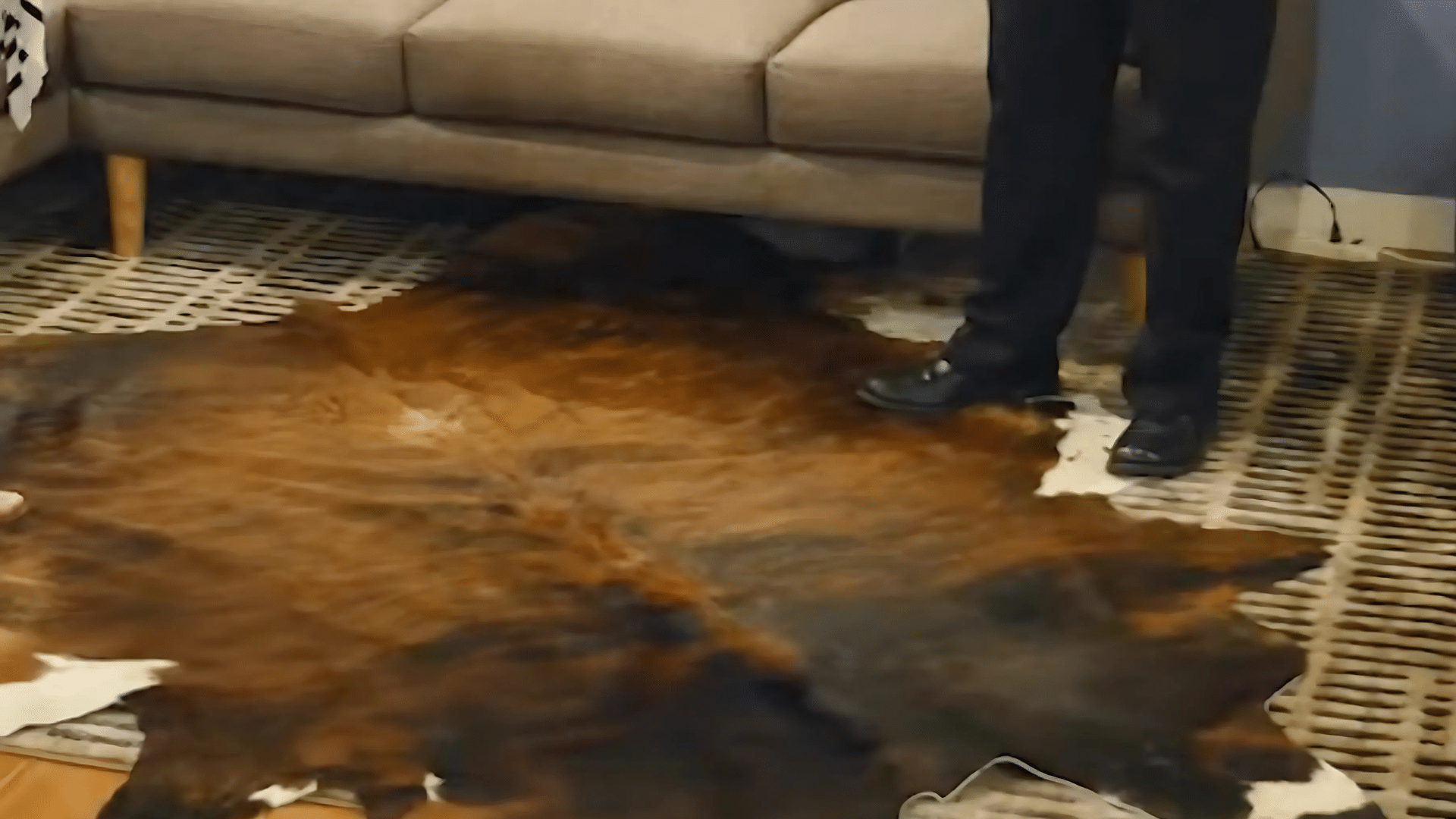
Textures add depth and personality to your space.
A cowhide rug, for example, introduces an organic, tactile element and complements nearly any style, whether traditional, contemporary, or transitional.
Mix a shag with a flat weave or leather with wool for a dynamic design. Combining textures makes the layering visually interesting and touch-friendly.
Watch our detailed video guide to learn creative tips and techniques for layering rugs beautifully in any room or style:
Layered Rugs Living Room Ideas
Here are some curated combinations to suit different aesthetics:
| STYLE | COMBINATION | WHY IT WORKS |
|---|---|---|
| Minimalist Look | Jute + Wool | Clean look with added warmth and texture. |
| Bold Statement | Jute + Persian | Natural texture with a pop of bold color. |
| Rustic Modern | Flatweave + Cowhide | An organic feel with a chic, rustic edge. |
| Cozy Corners | Flatweave + Shag | Soft layers for a warm, inviting vibe. |
Stylish Rug Layering Combinations
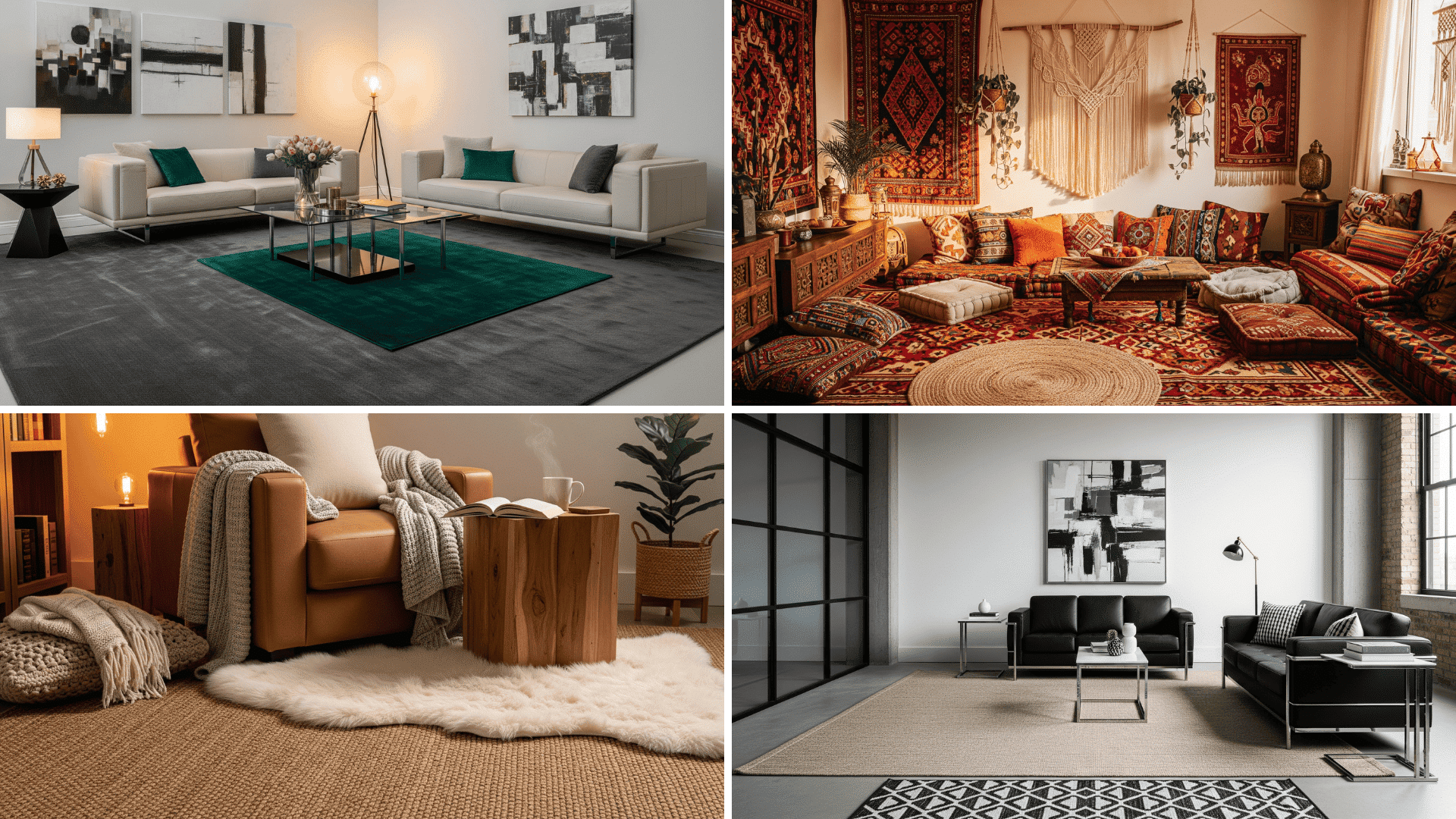
Layering rugs is a great way to add depth, warmth, and personality to any room.
Here are some stylish combinations that work beautifully in different settings:
1. Modern Luxe
Start with a large gray wool base rug and layer a smaller jewel-tone velvet rug on top.
This combination creates instant sophistication with the neutral foundation letting that pop of emerald, sapphire, or burgundy really shine.
The texture contrast between wool and velvet adds visual interest without overwhelming the space.
2. Casual Coastal
A natural seagrass base rug paired with a soft blue and white striped cotton rug brings that relaxed beach house vibe indoors.
The organic texture of seagrass grounds the space while the stripes add movement and freshness.
This combo works perfectly in sunrooms, bedrooms, or any space where you want to feel like you’re on vacation.
3. Boho Chic
Layer a patterned kilim base with a small, round, braided rug for that perfectly imperfect, eclectic look.
The flat-weave kilim provides bold pattern and color, while the braided rug adds cozy texture.
This combination celebrates the “more is more” philosophy that makes boho style so fun and personal.
4. Urban Minimalist
Keep it clean with a neutral monochrome base topped by a black-and-white geometric rug.
This pairing gives you visual impact without clutter, perfect for modern spaces that need a bit of personality.
The geometric patterns add just enough interest while maintaining that sleek, uncluttered aesthetic urban dwellers love.
5. Warm & Cozy
An earth-toned flatweave base layered with a plush faux-fur rug creates the ultimate cozy corner. Think warm browns, deep beiges, or muted terracotta as your foundation, then add that irresistibly soft faux-fur piece.
This combination practically begs you to kick off your shoes and curl up with a good book.
Common Mistakes to Avoid While Layering Rugs
Layering rugs can upgrade your space, but minor errors can ruin the effect. Keep these simple tips in mind to get the look right:
- Using Rugs of The Same Size: It removes depth and makes layering pointless.
- Skipping a Rug Pad: These can cause slipping, wrinkles, and unsafe flooring.
- Mixing Clashing Colors or Patterns: Creates a chaotic, unbalanced appearance.
- Ignoring Proportion and Room Size: Oversized or tiny rugs can distort the layout.
- Placing Heavy Textures on Top: Thick rugs, such as shags, should always be the base.
Wrapping It Up
This process isn’t about stacking pieces randomly; it’s about creating balance, comfort, and a vibe that feels you.
With the right base, a striking accent rug, and attention to texture and proportion, your living room or bedroom can look straight out of a design magazine.
Remember, rugs should complement, not compete with, the rest of the room’s design.
Ready to upgrade your floors? Grab those rugs and start layering!
Frequently Asked Questions
Can I Layer Rugs on Carpet?
Yes! Choose a flat base, such as sisal, over carpet and add a bold accent rug for contrast.
What Size Should the Base Rug Be?
It should cover your main seating area and extend beyond the legs of the furniture for balance.
Do Layered Rugs Work in Bedrooms?
Absolutely! Try a large neutral base under the bed with a smaller accent rug at an angle.

